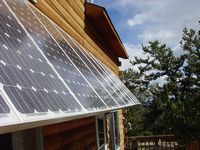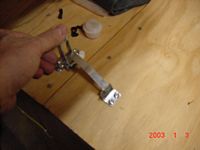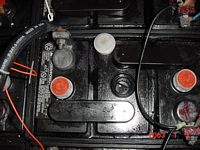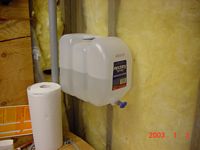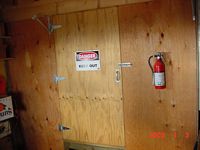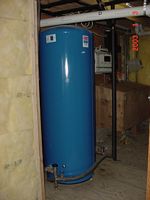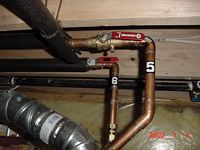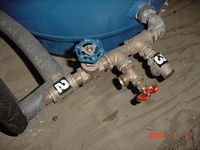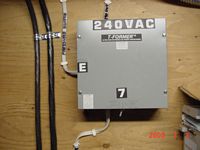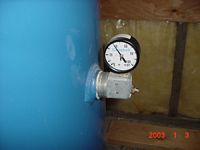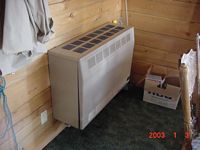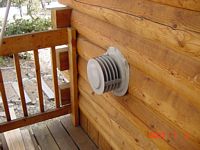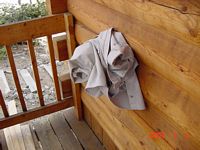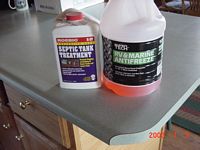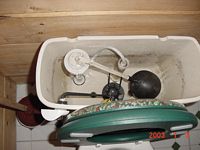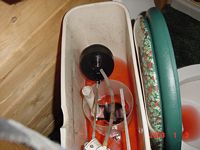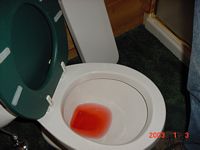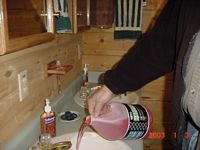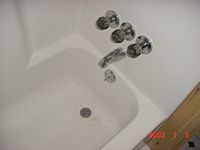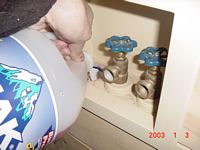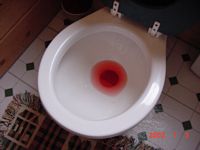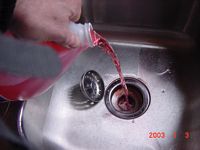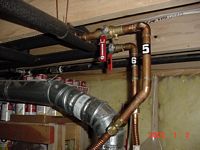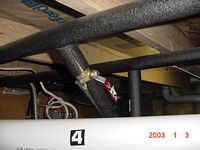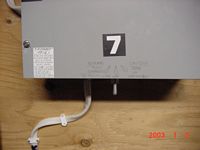Life-Support Systems
Maintenance and Winterizing
Video Tutorials - Let them fully download if you do not want to see choppy videos
- Switching Propane Tanks (1.75MB)
- Lighting The Propane Wall Heater(s) (0.39GB)
- Winterizing Battery Room, Draining Pipes (2.67GB)
- Explanation of Well Pump Switch (72.95MB)
- Adding RV Antifreeze To Toilets And Drains, Draining Pipes (1.00GB)
- Winterizing Food Storage, What foods to put in the Battery Room (0.12GB)
- Winterizing Washing Machine. Part 1 (0.80GB)
- Winterizing Washing Machine. Part 2 (0.11GB)
Battery Maintenance Our power comes from 10 100 watt Solec photovoltaics wired for 24 Volts. We get 6000 watts of energy every day and that gets stored into 12 Trojan L6 deep cycle lead-acid 6 Volt batteries. We check the water level periodically to insure that the level is within a 1/4 inch or less of the indicator. They get topped off ONLY with distilled water that we buy in 2-1/2 gallon jugs at the grocery store.
Turning On Life Support - Utility Room
Propane Appliances We own two 500 gallon propane tanks. Only one is in line at a time. We switch over when one shows to be about 20% full. They get filled maybe once a year (or every other year) by Bailey propane in Bailey, CO. They have cheaper rates than other companies nearby and are willing to make the trip. The appliances that run on propane are the kitchen stove, the Servel Rifridgerator, the 40 gallon hot water heater, the Empire wall-vent heater. The cabin is plumbed for a wall heater in each bathroom and for a propane generator in the basement. We haven't seen the need to add more wall heaters, as the wood-burning stove handles heating the main areas nicely. The refridgerator and hot water heaters are on all the time and the pilot stays lit on the stove. Every now and them a pilot lit goes out on the stove top or on the broiler underneath. When we are not at the cabin, or have winterized it, we lower the temperature down on the hot water heater.
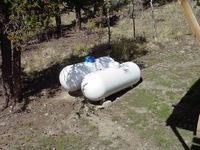
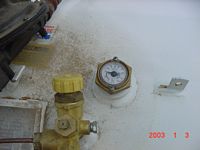
Propane Heater In only the rarest, coldest situations do we ever light the propane heater. One, its very difficult to light and, two, it sucks propane ($) like there is no tomorrow. We have never been able to light this with the built-in ignitor, so we have to take the little window off (held with 2 thumbscrews) and light the pilot directly while holding the knob in per the instructions on the bottom of the enclosure. The front cover/shield lifts off easy. We use a small hand held propane lighter, for bar-b-que grills, to light the pilot, but unless you stop the airflow through the vents, you can't keep the lighter itself lit. Its best to do this with the wood-burning stove cold as once it is lit, it will draw air from everywhere, including through the heater's vent through the wall. I wrap the outside vent cover to help slow down the airstream. At first I used a shirt or jacket, but at times if you are slow in getting the pilot lit, you can burn a hole in the cloth. I now wrap it in tin foil. Once the pilot is lit and stays on, just put the window back on and rotate the know to ON. Once the pilot is lit it will stay lit. The thermostat is on the wall below the stairs and we keep it at 60 to take the chill off the particularly cold mornings when the outside temperature is below freezing.
Winterizing - Living Areas Whenever we leave the place for an extended period of time, we winterize the cabin to prevent the plumbing from breaking. Any pure water left in the pipes and fixtures could freeze and break the pipes through expansion. After Mike turns off the water in the utility room (see next section), Becky will open all the faucets to allow the water to flow back into the well. She'll drain the toilet tanks by holding the lever down. She'll then use a plunger to get almost all the water out of the bowls. Pink RV Antifreeze, which will not poison the septic system, is poured into the toilet bowls and tanks (1 to 1-1/2 cups), and in every P-trap or drain (about 1/2 cup) in the shower stall, tub, sinks and washer drain. Once this is done, she go around and close all the faucet valves so they are ready to receive us when we get back.
Note: Just prior to this will be the last chance for the ladies to relieve themselves, so take advantage of the opportunity.
Winterizing - Utility Room. Turning off the Life Support, Draining the water back into the well.
